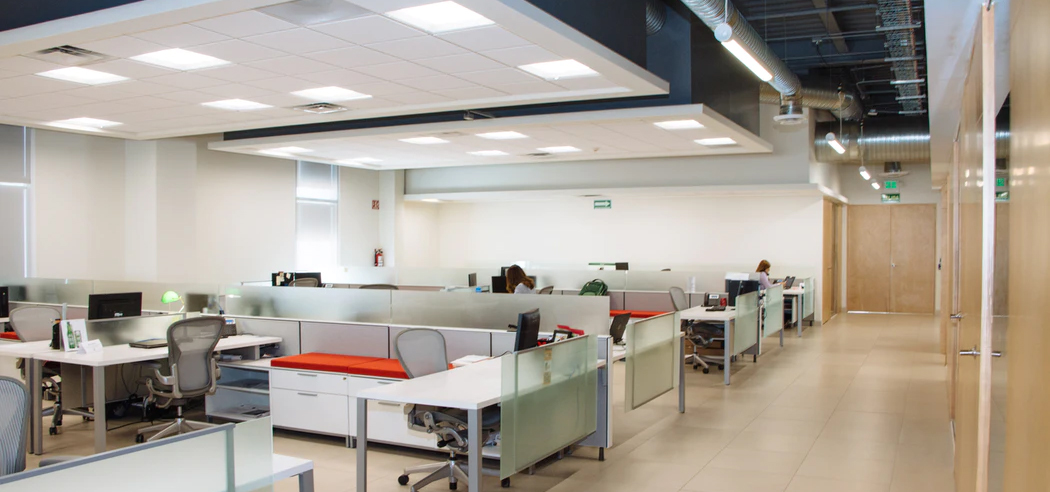How our world has changed.
In the post-pandemic world, office building occupants trust in the spaces and places where they work is being challenged. How will employers be able to convince workers to return and feel healthy and safe? The primary focus will be on personal health and wellness. My thoughts:
Sometime in the not too distant future you have been asked to come into head office rather than work from home as you have been doing since the pandemic started. You continue to use a mask & gloves. Approaching the main entrance the doors open automatically. Hand wipes are everywhere in the main lobby. You verbally instruct the elevator what floor you want thus having to avoid touching any buttons. The elevator counts the number of people boarding and allows only enough to allow for social distancing. Upon arrival you step out into a room filled with well-spaced desks and a few dividers rather than the previously desired but now unacceptable open plan floor design. All associates are careful to avoid close contact preferring to communicate using their personal sanitized devices by texting, emails, visual aids or cell phones. Chance meeting areas in corridors and public spaces have been designed out.
Meeting rooms and cafeterias are smaller with less chairs. A meeting room once designed for 10 chairs will now have just 5. Each desk, chair, common areas will have posted documentation as to when they were cleaned last. Coworking spaces, communal spaces, hot desk layouts are gone. Private offices with full height glass demountables have returned. In the remaining open plan areas, distancing is the norm, preferable to partial height physical barriers.
What you cannot see are the frequent 24 hour cleaning policies instituted by your employer and mandated by his liability insurance company, the antimicrobial features woven into all necessary materials and fabrics, redesigned and upgraded HVAC systems designed to clean and recirculate air, sanitizers introduced into the ventilation system. UV lights, like those now used in hospitals, will be turned on at night to deeply disinfect the office area. Everything, coffee makers, door handles, copy machine buttons, light switches, countertops are cleaned regularly and thoroughly.
Working from home will become the new normal. Technology and ever changing communication abilities allows this transition to occur rapidly and many who are now working remotely will never return. Employers because of the pandemic, the opportunity for dramatic cost savings in rent and the influence of Millennials will encourage working remotely. The need for owned or rentable office space will decrease with a resulting glut of space becoming available and a subsequent decline in office building construction.
So how will these anticipated design and life style changes affect Operable Walls?
- Meeting room space design will have to be re-thought. Accommodations for only half the pre-pandemic amount with others joining virtually.
- More electrically operated systems and features requested. Continuously hinged center stacking operated by a wall mounted switch. Future systems will be individual motor driven panels, voice activated.
- Identifiable locations or grips on manually operated walls that the operator should use to push or pull panels. These locations can quickly be sanitized.
- Easily sanitized hard surfaces (plastic laminate, painted steel etc.) on operable wall systems rather than conventional porous coverings.
- An increased use of acoustic glass wall systems. Easily cleaned and sanitized as well as allowing see-through capabilities to ensure that distancing guidelines are being maintained.
- Electrically operated acoustic seals & closures, automatic seals rather than mechanical, pass doors without knobs or handles etc. Essentially features that limit contact.
Moderco is working on products and features that anticipate the “New Normal” in office buildings as well as Hospitality, Educational. Healthcare and Religious markets. Call us at 1 800 363-3150 so we can help in the design of Operable Wall systems that met the new needs of these times.





